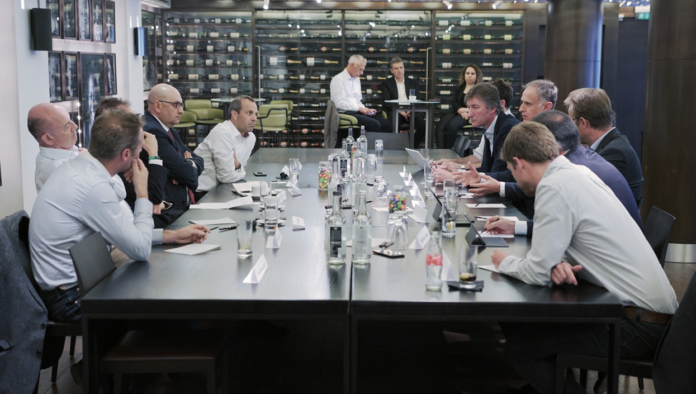Under the header Facing the Future, the mobile industry’s leading CTOs assembled in London earlier this summer to define the challenges and opportunities they face with digital transformation and the rollout of 5G. James Blackman reports.
Participants
Micha Berger, CTO, Telenet
Bryn Jones, CTO, Three UK
Fotis Karonis, MD, Mobile and Voice Convergence at BT/EE
Andy MacLeod, ex-CTO for Africa, Middle East and Asia, Vodafone
Kester Mann, Principal Analyst, CCS Insight
Graeme Neill, Executive Editor, Mobile Europe and European Communications
Bengt Nordstrom, CEO, Northstream
Gediz Sezgin, VP, Network Technology, Turkcell
Geert Standaert, CTO, Proximus
Payam Taaghol, CEO, MYCOM OSI
Radoslav Zlatkov, CTO, Vivacom
Except for certain old habits, which are always the hardest to break, everything is in play and nothing is in the way. That is the conclusion of a wide-ranging discussion among leading technologists on the eve of Mobile Europe’s 2018 CTO of the Year Awards in London about this industry’s own digital transformation.
The session starts looking back, with a question about the most considerable challenge for operators in the last 12 months. Geert Standaert, CTO at Belgium’s Proximus, and last year’s Regional CTO of the Year, kicks things off with a view of the intensifying regulatory environment.
The weight of regulation, most recently made heavier by the introduction of the GDPR protection of consumer information, will continue to be a burden, he says. “We have a role to educate, so politicians and regulators understand how things work – so they understand the consequences of their decisions.” The economic value of mobile broadband in Europe will be also stimulated or stymied by regulation. “However hard we work in Brussels, the wrong policies will put spokes in the wheels,” he says.
His second point sets the tone for the rest of the session. The market’s ambition is outrunning its means or, rather, its hype is out of control. “There is a difference between the marketing and the reality,” he says, joking about remembering the days when straight-talking engineers set the agenda.
“Nowadays, you have to put a giant filter over the marketing. We all know the promise of NFV and SDN – around time-to-market, agility, and cost – but you sign up to these business cases with your blood, and your CFO wants to know if they don’t deliver [the forecasted returns] immediately.”
The effect is like a runaway train. Marginal gains are sold as rapid transformations by desperate vendors, he suggests. A dose of old fashioned realism is required. “That engineer-to-engineer debate is needed again,” he says.
But it is not just the vendors; operators are shovelling in the coal as well. “Marketers are putting more gigabytes into the packages,” he adds. The rest of the panel picks up the thread. “The marketing team is putting pressure on the networks,” says Micha Berger, Chief Technology Officer at fellow Belgian operator Telenet. “We’ve been giving away more and more. It’s like it’s the only way we know how to sell – to play around with the bundles.”
He reverts to a familiar industry plot-line. “The challenge is not to become a utility company. If you’re investing more because usage is going up, and your ARPU is flat, even on a good day, then it’s an impossible model.”
Radoslav Zlatkov, CTO at Bulgaria’s Vivacom, agrees. “The difference between the expectation and reality is getting wider and wider.” But the pressure from within is not just from edgy marketing teams, but from impatient shareholders. “They measure us in months, quarters, years,” he says.
In most cases, they have neither the time for digital transformation, nor the stomach for industrial revolution. “No one is willing to accept the transformation costs – which will probably come out as an effect after several years,” says Zlatkov.
“My supervisory board wants to know why I’m burning their money. I explain it’s crucial. In the end, they give me room to breathe because I am achieving short-term targets on a quarterly basis.”
Working in a pressurised market like Bulgaria, “with probably the lowest ARPU in Europe”, creates certain discipline. “We are very efficient; we are constantly optimising our bottom line.” The trick with back-office transformation is to keep it out of sight of shareholders, it seems. “We have to hide strategic things in behind,” confesses Zlatkov.
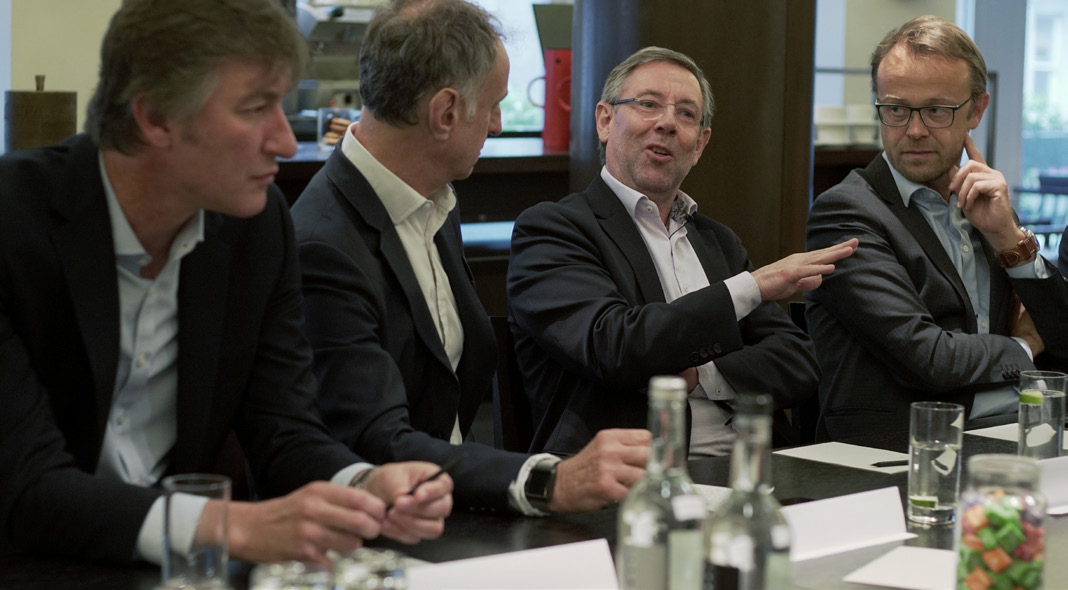
Urgency and the weight of history
This unhinged dynamic means practically every task in network operations soon becomes urgent. Thirty percent of the work in Zlatkov’s department was classified as ‘strategic’ two years ago, he says; that figure is closer to 70 percent now. How can operators do so much more with so much less, just to maintain the status quo?
Standaert sums up the dilemma for engineering teams. “We are being asked to go further in our digital transformation – to deploy 5G, rollout fibre, and support 70 percent higher demand for data – with the same capital budget, and targets to bring costs down,” he explains. “Even if we take a filtered view of the next 10 years – and I don’t mean the [inflated] Ericsson and Cisco view – then the challenge is enormous. We have to find new ways.”
Which poses the question again about ‘facing the future’, and what operators should do to catch a sail on the rising digital swell, which is about to pull everything from its mooring. Berger at Telenet reckons operators should put urgent focus on software innovation, and follow the course of younger internet companies.
“We should change our industry by creating capabilities we haven’t had before. We have to start by building strong networks. That is the foundation. We have to be smart in the infrastructure we put in the air, in the ground, in data centres. But we have to put more into software and innovation to build new products,” he says.
“We should be doing this within network operations, and not just waiting for vendors and marketers to come up with ideas. We are used to deploying boxes in fields. We need to let software engineers loose in this environment, to give them a playground in which to innovate. We should have innovation centres, and challenge each other.”
Telenet opened an innovation centre in Brussels late last year, he notes, and staffed it with graduate programmers. “We have brought students in, and there are great things coming out of it. Yes, 80 percent ends up in the garbage, but 20 percent is really good,” he says.
Almost as an aside, he suggests over-familiarity in the telecoms market has bred complacency. The industry needs to diversify; new blood brings new ideas. “Perhaps the fact we see so much of each other is not always a good thing. As an industry, we need to bring new people in.”
The sentiment chimes with the rest of the panel, which collectively describes the telecoms market as rather long in the tooth. “There is a serious point in there, that we are 20 years older than the industries we compete with,” remarks Andy MacLeod, former Chief Technology Officer at Vodafone. “When Vodafone started, the jobs were doing this,” he says, pointing upwards. Not anymore, he says. “You can see the thought process: ’Is this where I’m going to be for 20 years?’”
The echo around the table confirms this as a hard truth. Bengt Nordström, CEO at Northstream, and a judge for CTO of the Year, talks about redundancy programmes within operators, and the challenge for veterans of the industry to change horses. “There’s not that many places to find a new job, so you better stick with what you know,” he says. “It makes us protective of change. In a growing job market, it would be different, because you’d happily explore new things.”
The answer is to “embrace diversity into the equation”, comments Fotis Karonis, MD for Mobile and Voice Convergence at BT/EE. “Different skills and cultures will challenge a company, and move it forward. The inclination is to hire people that reflect your own world view. But change can’t be achieved by sticking with the same mindset.”
That world view, informed by legacy and experience, is an issue for telecoms. What would be required for the industry to embrace failure as a means to learning, as Berger suggests with his 20/80 ratio for grassroots innovation? The industry is struggling to reconcile its past with its future, and to find a course between, away from the siren song of utility provision.
“Our biggest challenge is understanding what to do with digital,” remarks MacLeod, at once drawing a distinction with the age-old battle to market airtime. “Because that’s us trying to move into this layer around us. That’s what we have to wrap our heads around. The problem of unlimited data is a tactical one, but it’s something we know. As an industry, I’m not sure we know how to do the digital piece nearly as well.”
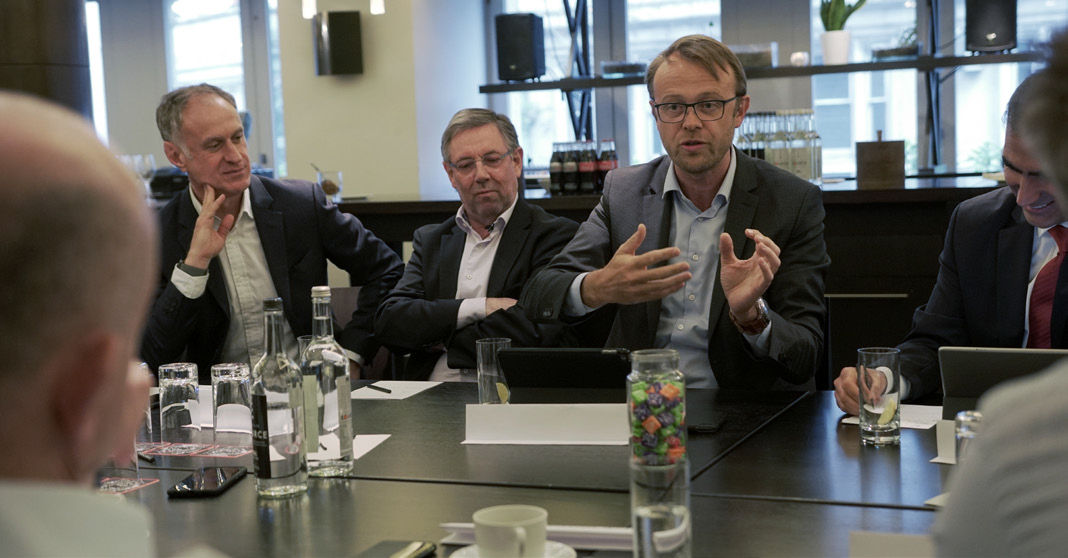
Handcuffed by hardware
Payam Taaghol, CEO at MYCOM OSI, provider of service assurance and analytics to network operators, and another judge for the awards, points to the different business models, contrasting paying local subscribers hooked on mobile services, with a global audience served by advertising and less critically dependent on their providers. How can their profits flow so easily, when this industry’s are so becalmed, he wants to know. “We haven’t figured out how to make money, and they have. What is the barrier?” The clue is in the name, he suggests, in the ‘operation’ of networks.
It is an explanation that works for Berger, who expands his earlier point about innovation. “We are bound to our infrastructure; those companies are only bound to their ideas. We should use our infrastructure to be the most efficient we can be, but we shouldn’t be handcuffed to it. We should be able to innovate, not just in our home market, but in every market. Netflix is based in California, but it serves the whole world,” he says. Physical infrastructure is this market’s albatross, suggests Nordström. “The idea of building a Facebook for the UK is not going to fly. That’s the limitation for operators. The question is how to compete when your competitors have a global market. Telefónica and Vodafone have 30 percent of their markets, but they can’t scale as global businesses.”
In the end, scale is more easily achieved over the top of the internet, observes MacLeod. “Those companies are all on-net, and most of us are off-net. More of the world is off-net for Vodafone than is on-net.” He compares the internet experience offered by social media to the ‘walled garden’ environments first presented by mobile operators in the early days of 3G. “It is a model that works because you don’t have to negotiate.”
Across the table, Zlatkov agrees. “They are not regulated; we are. It is hard to fight with someone that is completely free. They also have different expectations. Their failure rates are much higher than ours. We cannot fail. If we failed once, it could bring down the entire business.” However, he notes that that risk is not stopping the operator from a developing “cooperation” on small-scale engineering projects between Vivacom and its OTT partners in Bulgaria.
Taaghol says the gap between how much customers are willing to pay for OTT players and operator services is stark. “ADT charges me £35 per month for my alarm system, Spotify charges me £19 per month for music, and you all charge £25 for connectivity, anywhere in Europe. It is just too cheap. How can operators survive, always doing more for less?”
“You make your own Spotify,” responds Gedin Sezgin, Chief Technology Officer at Turkcell. “You have the network, the customers, and other advantages as well. You know, WhatsApp can make app-to-app calls, but, with a network, we can make app-to-network calls. It brings important differentiation.”
Turkcell has modelled itself as the “first digital operator” with the launch of a roster of services straight out of the OTT playbook (see interview, page 12), which it is making available globally. “We changed our minds; we become a digital operator – the first in the world,” explains Sezgin. “We started to develop our own digital applications.”
It sounds simple. Is Turkey a special case? Could an operator in the UK, say, do that? “There aren’t many like us,” he admits. “There is a way to go, yet, but you have to start somewhere. Last year, our revenue growth was 23 percent – twice the rate of the second best growth of any operator in Europe.”
“That’s unfair. Just thanks to digital applications?” asks Berger. “Yes, most of it comes from there,” Sezgin replies. “But we launched a 4.5G network two years ago, with 4×4 MIMO and carrier aggregation from launch, so our 4.5G users are recoding double the data usage of other customers.”
Still, Turkcell’s business model is fundamentally different to a lot of European operators; in many cases, telecoms operators are hobbled by their networks. Taaghol explains the dilemma: “The largest taxi company in the world, Uber, owns no taxis; the largest retail business in the world, Alibaba, owns no stock; the largest hotel chain in the world, Airbnb, owns no property,” he remarks. “This industry owns telecoms networks, and says it is bound by them.”
Zlatkov fires back, drawing on some of the Szegin’s earlier comment about the market accentuating its differences. “Each has their advantages. As network operators, we can compete on a different level. We have our subscribers, our networks, our billing relationships. We are known; we visit our customers’ premises. On top of all that, we are heavily regulated. The trust is with us.”
Standaert at Proximus agrees. “We have networks and local presence.” He cites also the market’s engineering prowess, as an inherent technical advantage, embodied by the CTO-grade knowhow around the table. “We take our expertise for granted. We can all programme our smart homes. That’s not straightforward for everyone. There must be opportunity in that.”
He has an instructive tale about frustrated global scale. Proximus has created a mobility platform that combines data from mobile networks and navigation systems to offer cities a solution to congestion. The challenge is operators require a local presence to trade in a familiar manner with cities. “Scaling a platform is not easy; it comes with a lot of hurdles,” he explains.
At the same time, such scale is attainable, he suggests, pointing to the example of Proximus subsidiary BICS, wholesaling carriers’ services in international markets. “It started in Brussels, and is now in California and Asia, and is number three in the world. Things that can be done; it’s just hard work.”
Collaboration affords greater opportunities, especially for tier-two brands locked in single markets. Proximus jostles with Orange Group, Telenet, and Liberty in Belgium. “I am a small operator, a small guy; thank god Luxembourg is there,” Standaert jokes. “Smaller operators should come together, and cross their engineering, and find ways to scale.”
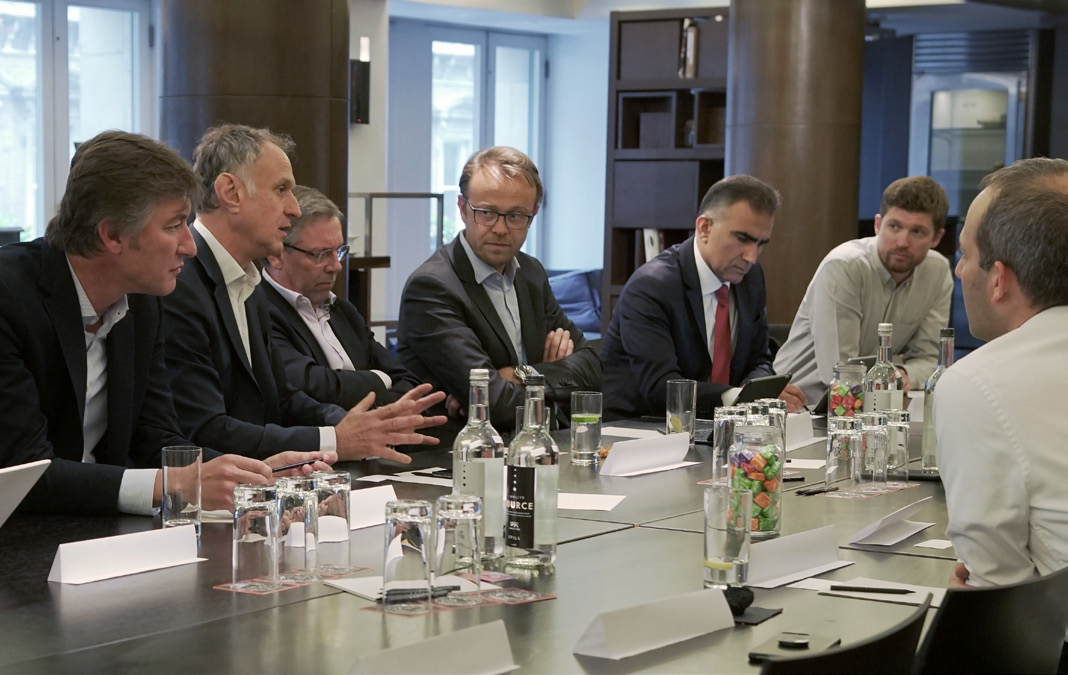
Revisiting collaboration
MacLeod shakes his head and reflects on the idea of inter-operator collaboration as a cure-all for cheaper infrastructure and fiercer innovation. “This industry, or this layer of it, has created a lot of what’s good about telecoms by cooperating. But that has hardly happened in the last 10 years,” he comments.
“We are quite focused on the closer nature of competition with each other – and between our layer and other layers of the industry. You could argue we don’t take a big enough strategic perspective. But that’s what happens when you have a fairly robust industry; it tends to get introspective.”
Nordström rejoins; the work to standardise GSM services a generation ago was collaborative and definitive for the market. “We achieved a scale we never had before. This industry doesn’t collaborate like that anymore. Everyone talks about it, but no one does it,” he says. “The GSMA is designed for collaboration,” offers MacLeod. “That’s more an event organisation than a collaboration,” Nordström shoots back.
There is a ‘chicken-and-egg’ dynamic with future networks and services, reckons Sezgin. In terms of industry collaboration, the first task is to thrash out 5G use cases, he suggests. “Sharing is important; it helps in ways. But 5G is not like previous technologies. We need the use cases to justify the investment. We should work together to create the use cases, and then we can invest.”
Vivacom in Bulgaria sees things rather differently. “If we just wait for 5G to help us, we will remain as pipes. We need to have examples – to have a selling point,” says Zlatkov. It sounds like the same argument, to identify use cases first, but he goes further. Network operators should develop industrial propositions in collaboration with third parties, which can be further iterated in live settings with trusted customers, before their wider commercialisation. Operators must call the tune with 5G, and dictate the pace of innovation, he says; if they fail to orchestrate around their own radio play, it will be rendered as a baseline for others. Zlatkov says: “If we just wait for 5G, someone will come to us and say, hey guys, let’s use your 5G network. We will miss the momentum.”
5G presents the telecoms industry a chance to reinvent itself for a transformative digital age, Karonis agrees. “It opens a new chapter. We can be over-the-top of the over-the-tops, and squeeze them. There is lots of optimism. We just have to revitalise the business model,” he says. More than this, it presents a unique opportunity for network engineers to write the future themselves, suggests Zlatkov. “The new sales forces will come out from our part of the industry, because we understand the technology. It’s just one logical step for us.”
But are we not in danger of mixing hype and reality, again? Karonis suggests the reality is 5G technologies will provide the capacity to serve the consumer market’s spiralling demand for digital services. “5G provides a quick response to that,” he says. Standaert echoes this. “The first use case for 5G will be about dealing with demand. The sexy stuff around latency and IoT, which you can’t do today already with NB-IoT and LoRa, will come later,” he says.
But the hype, mostly around enterprise services, is just as real, Karonis says. Society will be digitised and transformed with high-capacity, low-latency 5G impacting everything from industrial practices to city operations, to transport systems. “We start with the consumer side, but the big opportunity with 5G is in the enterprise space. That’s where the revolution is,” he says.
Across the table, MacLeod chimes in. “For people-to-people communications, 5G is an evolution of what we already have. For machine-to-machine communications, it is more revolutionary,” he says, acknowledging also that the IoT space is already developing around a number of LTE spin-offs and low-power equivalents.
He makes the point that 5G techniques like network slicing will allow operators to serve enterprise use cases in new ways. “We have a one-size-fits-all approach with the consumer sector. It’s not the way to go with enterprises, which are more fragmented. We have to be more granular,” he says.
The advancing role of data analytics and artificial intelligence, gaining momentum with the introduction of 5G networks, will enable almost defect-free networks, he observes, which will make the case for mobile connectivity in a myriad of critical enterprise functions. “Having machine learning so you can know about incidents is a super important science,” he adds. “By doing that you become increasingly relevant in time critical functions, so there is a lot of space beyond consumer to improve every industry.”
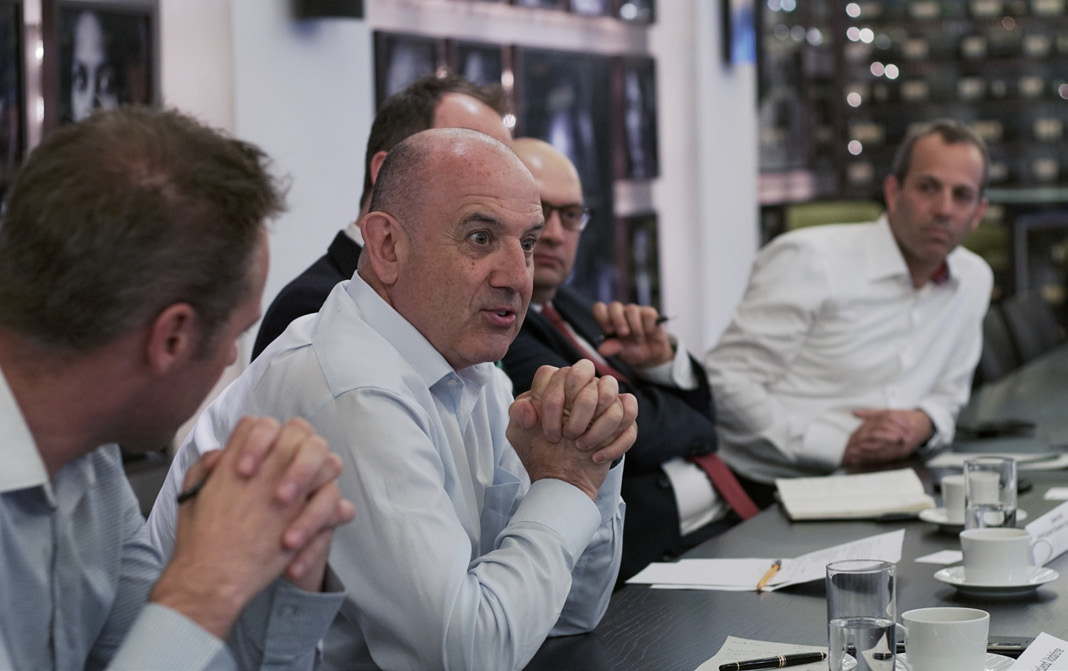
Preparing for take off
But contemporary digital communications rely on complex heterogeneous networks, which are impossible to build and manage alone, observes Karonis. The time for talking is done. “It is increasingly evident you can’t do it all by yourself. You need to leverage your strengths,” he says.
Karonis was director of IT at Athens International Airport in a previous life; mobile networks should be airports, he says – market-stations for transport and trade, pioneering new digital exploration and enterprise. “This industry is 30 years behind,” he says. “Airports are major hubs and market places. That is something we’re just starting in this industry. By having a strong brand, you can have your own content, and also attract the likes of Netflix and build the market around [it] to be more relevant in areas you are not used to being in.”
Models for sharing everything from transmission technology to energy consumption are increasingly relevant. Karonis references EE’s deal with UK rival Three to share LTE infrastructure, signed way back in 2013. “Finding common ground between us is so important,” he says. Bryn Jones, Three’s former Chief Technology Officer [see page 34], comments: “In UK, we’re in a slightly fortunate position with the elements of site sharing we have. In Europe and other countries, there will need to be more sharing.”
But for network building, the telecoms industry has to get closer to governments and landlords, as well. “5G requires more fibre and more cell sites. If governments want digital economies, then it is no good for multiple operators to do the same thing, at prohibitive cost. It is not going to work,” he explains.
Indeed, incoming 5G technologies make infrastructure sharing imperative if operators are to build networks efficiently, and find room to innovate over the top. The problem is letting go of old working habits, which have underpinned several generations of radio technology. “We want to live in the old world and move to the new one at the same time,” comments Berger.
Conservatism is no good, when there is so much is to play for. No one at the table deviates from the line about network sharing. “It is not logical to build two 5G networks in the same country. Because this competition over the best coverage is over. That game has gone,” says Berger.
“If we were smart, we would spend less; we wouldn’t make the vendors richer. We would share our networks, reduce our investments, and free up money for innovation. There’s lots we can do; we have lots of talented people. But at the moment, everything we have goes on infrastructure.”
There’s the answer; what’s stopping you? “Nothing is stopping us. We are stopping ourselves,” says Berger. “As an industry, we are not used to sharing. That approach has served us well until now. But the game has changed. If we shared more, we would gain more.”


